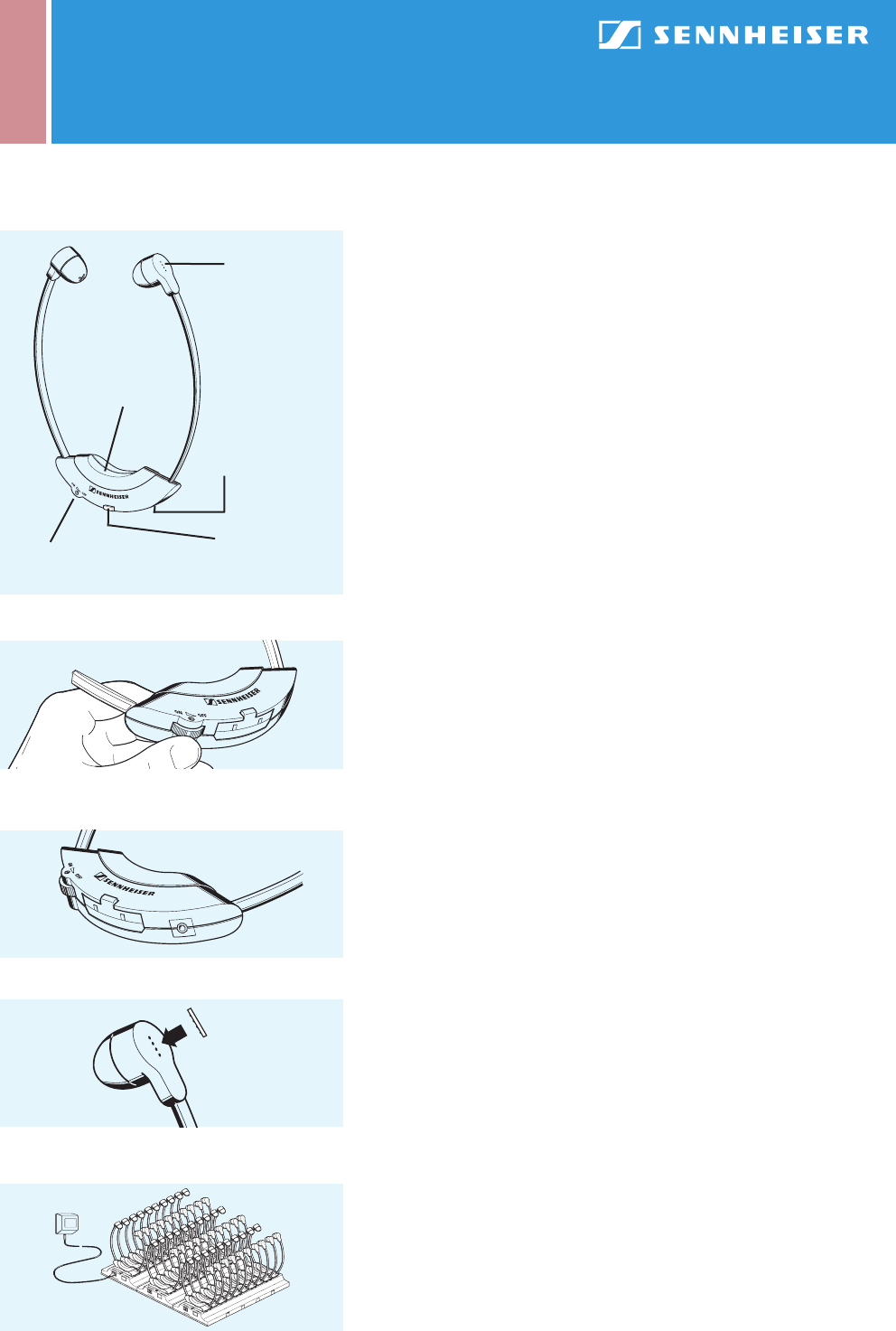
RI 150
IR Audio Transmission Technology | Receivers
The RI 150 mono receiver works on the extremely reliable carrier frequency 2.3 MHz,
offering excellent speech intelligibility and good music reproduction due to its wide
frequency response. A built-in squelch avoids loud hiss when the signal from the IR
radiators is too weak, for example when a receiver is used outside the radiator cover-
age area. The RI 150 is an elegantly shaped receiver which is very easy to use: the
only control the wearer has to operate in order to hear the transmitted signals is a
combined on/off/volume control with a small position indicator for reading off the
volume.
The audiology variant RI 250 has additionally been fitted with a balance control to
compensate for hearing differences between the ears. The audiology version has
a higher SPL and comes with strips of adhesive tape for covering the apertures on
the earpieces. By sealing them, low-frequency response can be altered: the more
apertures are covered, the more the lower frequencies are attenuated. Thus, speech
intelligibility is increased without increasing the volume. Due to its balance control
and the option of altering low-frequency response, the RI 250 can be ideally matched
to the ears of its user.
At the bottom, the variant RI 250 J is fitted with an audio ouput socket (3.5 mm
jack). Users can wear the stethoset receiver as usual, or they can put the stethoset
arms around their neck and connect a pair of headphones to the receiver output
socket or have the sound transmitted to a suitable hearing aid via induction cou-
plers or an induction neck loop. The RI 250 J also comes with strips of adhesive tape
for altering the frequency response.
The receivers are powered by the environmentally friendly BA 151 NiMH accupack.
For domestic applications, the L 151-2 charger is the optimum choice: it is designed
for two BA 151 accupacks and comes complete with mains unit. For professional
applications, Sennheiser has designed the L 151-10 charging unit. It can recharge
up to ten BA 151 directly in the receivers, as the accupack charging contacts are
located on the outside. Alternatively, you can also charge BA 151s separately, e.g. in
case you have spare accupacks. The L 151-10 requires the NT 92 plug-in mains unit,
which can be ordered separately in the version you require (European, UK or USA
versions available).
The L 151-10 can also be cascaded: up to five charging units can be joined by means
of the cascading bars fixed to the bottom of the units. Two to five cascaded L 151-10
are powered by an NT 2013 (or NG 2013-UK) plug-in mains unit. The recharging of
the receivers is carried out automatically and takes 10 hours. After that, the charg-
ing unit switches to trickle charging.
RI 150/RI 250/RI 250 J stethoset receiver
Apertures
for altering
the frequency
response
On/off/volume
control
Two IR receiving
diodes (behind
special plastic
cover)
Audio output,
3.5 mm jack
(RI 250 J only)
Inserted BA 151
accupack
Excellent ease of operation: The user has only to
operate the on/off/volume control
Audio output socket of the RI 250 J
RI 250/RI 250 J: Altering the low-frequency response
with the adhesive tape included with the unit
Three cascaded L 151-10 charging units with NT 2013
(or NG 2013-UK) plug-in mains unit and receivers




